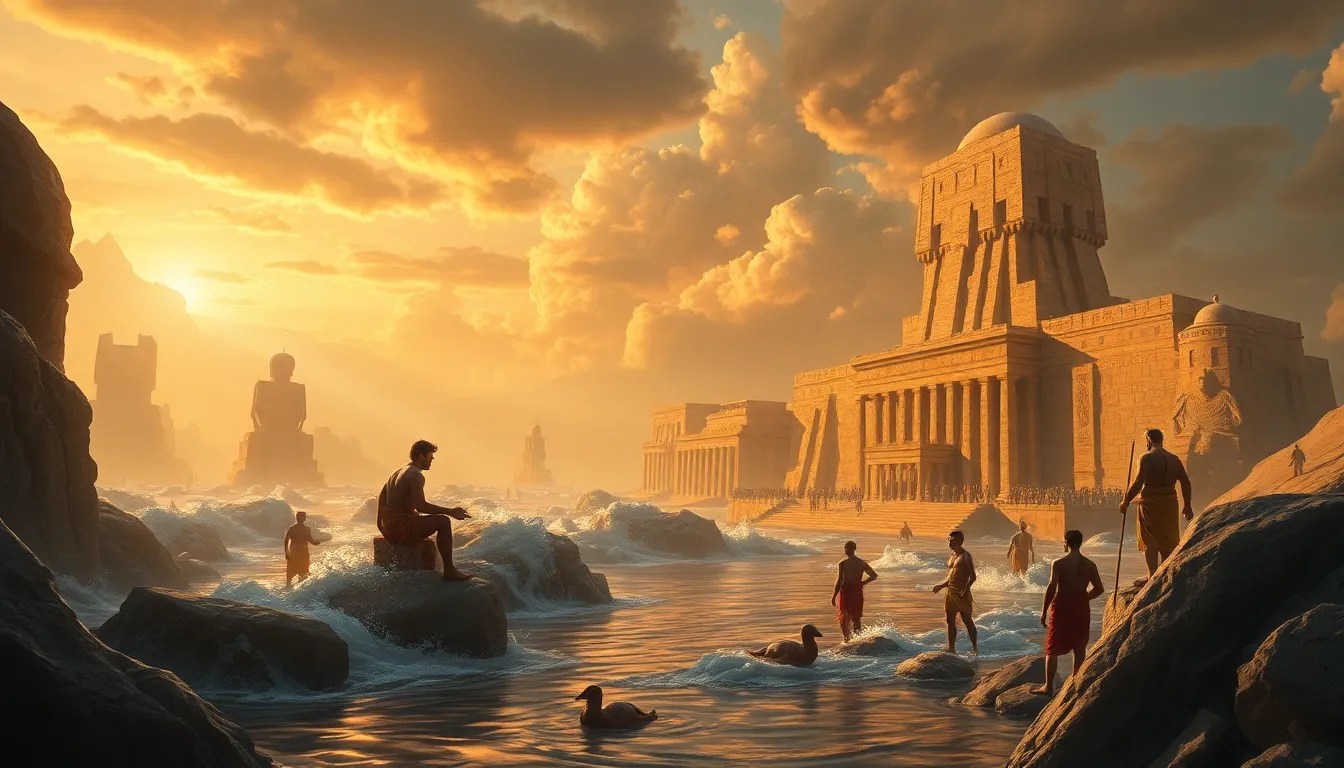The Flood Story of Atrahasis: Origins and Interpretations
I. Introduction
The Atrahasis flood narrative is one of the most significant stories in Mesopotamian mythology, encapsulating themes of creation, destruction, and divine retribution. This epic tale, originating from ancient Akkadian and Sumerian cultures, offers profound insights into the relationship between deities and humanity. This article aims to explore the historical context, the narrative itself, its symbolism, comparisons with other flood myths, interpretations, and its lasting legacy in popular culture.
II. Historical Context of the Atrahasis Epic
The Atrahasis Epic is rooted in the rich tapestry of Akkadian and Sumerian cultures, which flourished in ancient Mesopotamia. These civilizations, known for their advancements in writing, law, and urbanization, used mythology to explain natural phenomena and societal norms.
Mythology played a crucial role in ancient Mesopotamian society, serving as a vehicle for cultural values, religious beliefs, and social order. The Atrahasis text, preserved on cuneiform tablets, reflects the concerns and aspirations of a people deeply connected to their gods and the environment.
The discovery of the Atrahasis text in the ruins of ancient cities such as Ashurbanipal’s library in Nineveh has allowed scholars to piece together the narrative and its significance in understanding early human civilization.
III. Summary of the Atrahasis Flood Story
The Atrahasis flood story begins with the creation of humanity, who were fashioned from clay and imbued with the breath of life. Initially, humans served the gods by performing labor and maintaining the earth. However, as the human population grew, so did their noise and chaos, which disturbed the peace of the gods.
In response to the overpopulation and the clamor of humanity, the gods convened and decided to send a flood to cleanse the earth of its inhabitants. This decision highlights the fragility of human existence in the face of divine will and the idea that humanity’s growth can lead to its own downfall.
IV. Symbolism and Themes in the Atrahasis Narrative
The Atrahasis narrative is rich in symbolism and themes that resonate throughout human history:
- The relationship between humans and the divine: The story illustrates the dependence of humanity on the gods, as well as the potential for conflict between divine will and human existence.
- Themes of creation, destruction, and rebirth: The cyclical nature of life is emphasized, with the flood representing both an end and a new beginning.
- Symbolism of the flood: The flood serves as a cleansing mechanism, purging the earth of corruption and allowing for a fresh start.
V. Comparisons with Other Ancient Flood Stories
The Atrahasis flood narrative shares notable similarities with other ancient flood myths, which raises intriguing questions about cultural exchange and shared human experiences:
- Similarities with the Epic of Gilgamesh: The flood story in Gilgamesh parallels that of Atrahasis, featuring a hero, Utnapishtim, who is forewarned of the coming disaster and builds an ark to save himself and his family.
- Parallels with the Biblical flood narrative (Noah): The story of Noah in the Hebrew Bible echoes themes from Atrahasis, including divine warning, the construction of an ark, and the preservation of life.
- Cross-cultural flood myths: Various cultures across the globe possess flood myths that reflect similar themes of divine judgment and renewal, suggesting a universal narrative that transcends time and geography.
VI. Interpretations of the Atrahasis Flood Story
Throughout history, the Atrahasis flood story has been subject to various interpretations, reflecting changing theological and cultural perspectives:
- Scholarly interpretations: Scholars have analyzed the text through various lenses, including historical context, literary structure, and thematic analysis.
- Theological implications: The narrative raises questions about the nature of the gods, justice, and the moral responsibilities of humanity.
- Modern perspectives: Contemporary readers find relevance in the themes of ecological destruction and the consequences of human actions, prompting discussions about sustainability and coexistence.
VII. The Legacy of Atrahasis in Popular Culture
The Atrahasis flood story has left an indelible mark on literature and the arts, influencing various forms of expression:
- Influence on literature: The themes of Atrahasis resonate in countless works, from ancient texts to modern novels, highlighting humanity’s struggle against divine forces.
- Atrahasis in contemporary media: Adaptations in film, theater, and visual arts reinterpret the flood narrative, bringing it to new audiences and contexts.
- Enduring impact: The flood story continues to inspire discussions about ethics, environmental stewardship, and the human condition, proving its relevance in today’s world.
VIII. Conclusion
In conclusion, the Atrahasis flood story serves as a profound narrative that encapsulates the themes of creation, destruction, and the intricate relationship between humanity and the divine. Understanding this ancient myth not only sheds light on the beliefs and values of Mesopotamian civilization but also offers timeless insights applicable to contemporary society. The exploration of Mesopotamian mythology invites us to delve deeper into the narratives that shaped human thought and culture throughout history.



